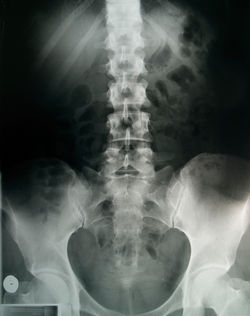
Katherine Cox Osteopath Rainham Kent
WHAT IS OSTEOPATHY?
 |  |  |
|---|---|---|
 |  |
The key principles in the philosophy of osteopathy are based on all systems and parts of the body, functioning together in an integrated manner for optimal health. The structure and function of the body are intimately related. If the structure is not balanced and healthy, then the function is affected and vice versa. If one system or part of the body is restricted the rest of the body must adapt and compensate for this. This can lead to reduced efficiency throughout the body and the development of symptoms including pain.
Osteopaths use a broad range of gentle hands-on techniques to help relieve stresses on the body, providing the body with an enhanced opportunity to heal itself.
Very often the area requiring treatment may be far removed from the location of symptoms. An example of this could be neck pain and stiffness with associated headaches, stemming from an ankle that was twisted a long time ago. If the ankle healed poorly and chronic restriction within the joint becomes established, this could result in an altered walking gait. This in turn can put an extra mechanical strain on the pelvis and spine and, over time the possible development of neck stiffness and pain, and cervicogenic headaches.
In 1993, osteopathy became a profession governed by statute in the UK, the governing body set up as a result of this is The General Osteopathic Council (GOsC). All osteopaths practising in the UK must be registered with the GOsC.
What to expect
The healthcare approach at Willows Osteopathy includes the provision of treatment, health information, self-management advice and support, and exercise therapy, as determined by the individual needs of the patient.
When you first consult an osteopath a full case history will be taken, in which not only details of your presenting condition are considered, but details of your full medical history, your day-to-day lifestyle, activities you partake in, exercise and diet, all factors that may have a bearing on your condition, giving the osteopath as much information as possible to help with your diagnosis, treatment and management plan.
Examination
During the examination, you may be asked to undress to your underwear, although this is not always necessary. Should you have any concerns about this please discuss them with your osteopath.
A general examination follows, which includes a postural assessment and how your body moves (bending forward/ backward/ sideways and movements of the upper and lower limbs), before closer assessment of the presenting condition. Special tests such as reflexes and blood pressure may be taken.
Diagnosis
Following examination, the osteopath will discuss their diagnosis with you as to the nature of your symptoms and their proposal for your treatment. Occasionally they may feel the osteopathic treatment is not appropriate for you at that time and refer you to either your GP or another specialist for further investigations such as X-rays, MRIs or blood tests.
Treatment
Osteopaths utilise a wide range of treatment techniques including:
• Soft tissue massage
• Muscle stretch and release
• Joint articulation and mobilisation
• Ligament and membrane balancing
Aftercare
At Willows Osteopathy we pride ourselves in our aftercare, working with our patients for the best possible outcome.
Following your treatment, the osteopath will give advice and discuss relevant exercises you can do to enhance your body’s natural healing processes, improve your posture and movement in your everyday life.
Due to the physical nature of the treatment, it is not unusual to sometimes feel sore or stiff in the first 24 to 48 hrs after treatment. Your osteopath will explain any likely reactions that you could expect and advise you accordingly. If you have any concerns it is important to contact your osteopath and ask for advice.
Generally, the longer a condition has existed and the more things in life that maintain it, the more care it will require.
Katherine Cox


